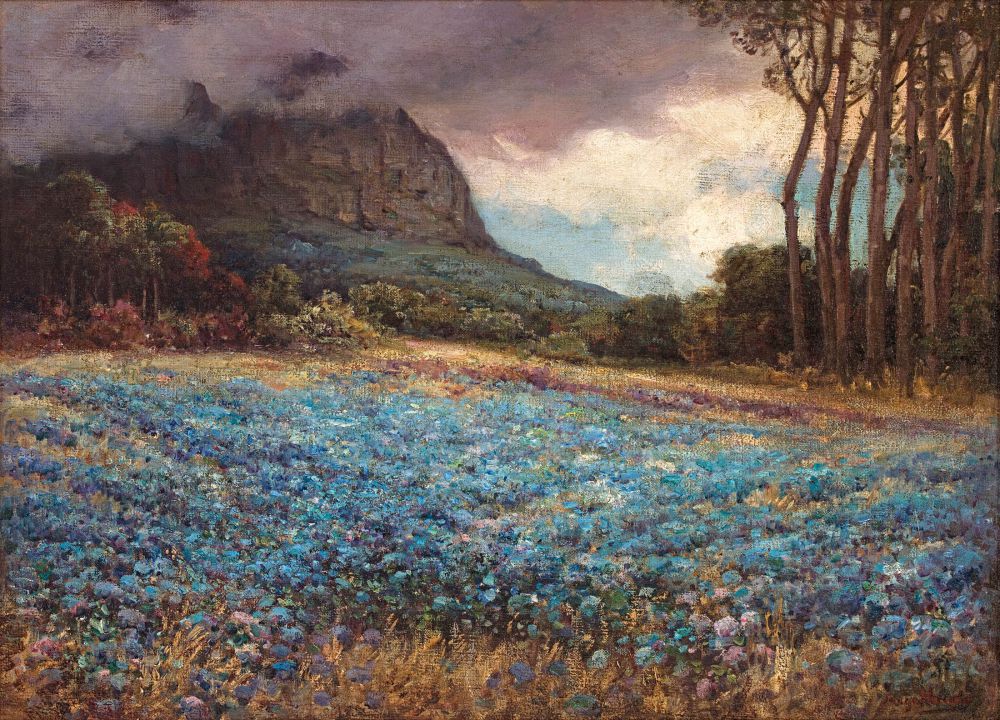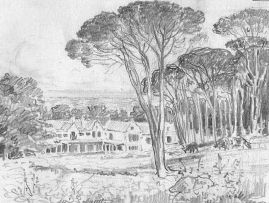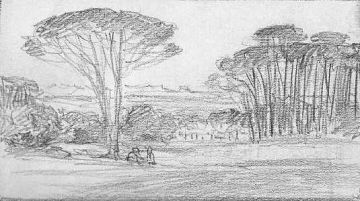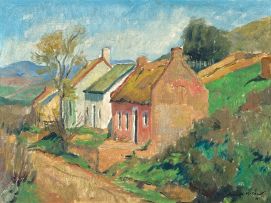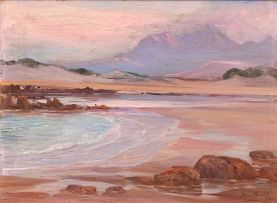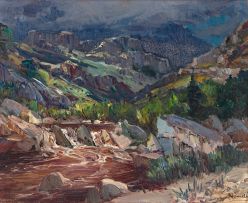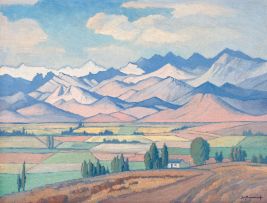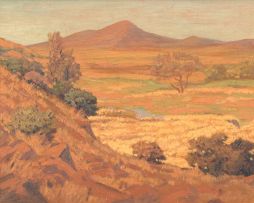Important South African & International Art, Decorative Arts & Jewellery
Live Auction, 6 March 2017
Important South African and International Art - Evening Sale
Incl. Buyer's Premium & VAT
About this Item
signed
Notes
Groote Schuur, the residence Cecil John Rhodes bequeathed to the nation, was gutted by fire in 1896, leaving behind only the outer walls and John Tweed's bronze frieze of The Landing of Jan van Riebeeck. It is anyone's guess whether or not Hugo Naudé visited the ruins when he arrived back in Cape Town that year from his European studies, but he evidently returned to the home repeatedly after it was refurbished in accordance with Sir Herbert Baker's designs. A number of quick-fire sketches survive (fig.1), as do vivid, expressive paintings, made both from the back colonnaded stoep of the home and the surrounding, sloping gardens. The present lot, seems an altogether more considered, demanding and fully developed painting than earlier, smaller renditions. The scope is particularly broad, taking in a group of iconic Stone Pines, the familiar shoulder of Devil's Peak, and long, rolling, plum-shadowed clouds; the brushstrokes and dabs, moreover, are deliberate and compact. The wild flowers in bloom dominate the composition, allowing the painter to blanket the landscape in shades of turquoise, mauve, navy and teal.
The Mountain Behind Groote Schuur Estate might be typical of Naudé's pioneering Cape Impressionist style, but the dewy luxury of its painted surfaces, the soft edges of the tree lines, and the gentle, atmospheric light, also recall the artist's year amongst the Barbizon painters in Fontainebleau near Paris. Most significantly, however, the sense of sheer delight the artist found in his famous Namaqualand flower fields, and the joyous spirit in which he captured them, is transferred to this instantly recognisable and historically significant Cape setting.
